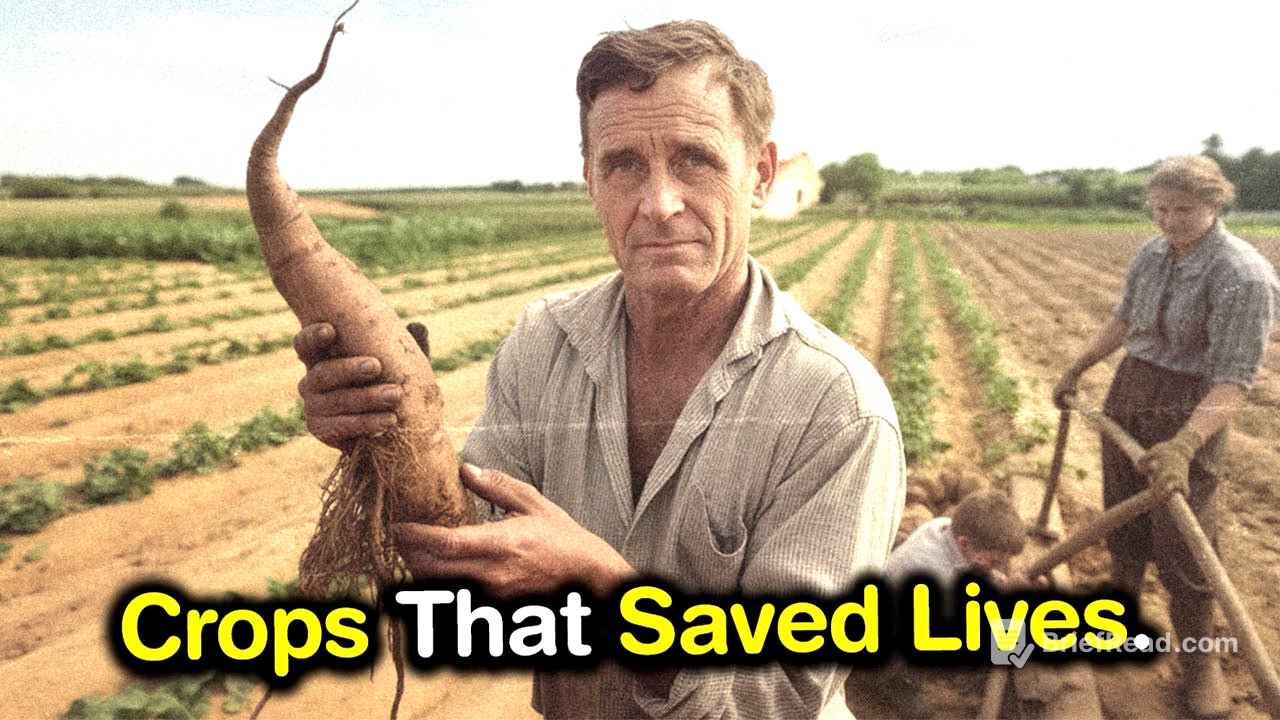TLDR;
During the Great Depression, many American families relied on home gardens to survive due to widespread poverty and food scarcity. Nine plants, in particular, were essential for providing sustenance: potatoes, corn, beans, cabbage, carrots, turnips, onions, sweet potatoes, and radishes. These crops were chosen for their versatility, ease of cultivation, nutritional value, and ability to be stored for extended periods.
- Potatoes: Versatile, high-yield crop that could be stored for long periods and prepared in many ways.
- Corn: Used for various purposes, including food, animal feed, and fuel.
- Beans: High in protein, easy to grow, and could improve soil fertility.
- Cabbage: Hardy vegetable that could withstand cold weather and be preserved as sauerkraut.
- Carrots: Rich in vitamin A, easy to store, and could be used as a sweetener.
- Turnips: Quick-growing crop that provided both roots and greens for consumption.
- Onions: Added flavor to meals, had medicinal properties, and could be stored for months.
- Sweet Potatoes: Easy to grow, high-yielding, and rich in vitamins and minerals.
- Radishes: Fast-growing crop that could be eaten raw and used as a row marker for other vegetables.
Potatoes: The Unsung Heroes [0:16]
Potatoes were a crucial food source during the Great Depression due to their versatility, high yield, and ease of storage. A single acre could produce 200 bushels, enough to sustain a family through winter. Families preserved potatoes by burying them in sand or sawdust to extend their shelf life. Potatoes were prepared in various ways, such as fried, boiled, mashed, or baked, and provided essential carbohydrates and nutrients when other food sources were scarce.
Corn: The Magic Plant [2:18]
Corn was a versatile crop during the Great Depression, serving as a food source for humans and animals, and even as a source of fuel. Families utilized every part of the corn plant, turning kernels into bread and flour, and stalks for animal feed and home insulation. Corn was easy to dry and store, lasting over a year without spoiling, and was sometimes used as currency. It grew well in various soil types, providing essential energy and nutrients when meat was scarce.
Beans: The Nutritional Warriors [3:57]
Beans were a vital source of nutrition during the Great Depression, offering a high-protein alternative to meat. Pole beans were ideal for small gardens, and dried beans could last for decades, serving as a secret weapon against hunger. Beans also improved soil fertility by pulling nitrogen from the air. Families cooked beans in various ways, utilizing fresh beans immediately and storing dry beans for months, with even the bean plants serving as animal feed or insulation.
Cabbage: The Food Champion [6:16]
Cabbage was a reliable food source during the Great Depression due to its ability to grow in poor conditions and withstand cold weather. Its hardiness allowed it to provide fresh food during winter when other vegetables were scarce. Families preserved cabbage by turning it into sauerkraut, which provided essential nutrients. Cabbage was versatile in cooking, used in soups, stews, and as wraps, and offered significant health benefits, including vitamin C.
Carrots: The Orange Soldiers [8:14]
Carrots were a resilient crop during the Great Depression, capable of surviving in poor soil and cold weather. They could be left in the ground all winter and still be edible in the spring. Families stored carrots in barrels of sand to keep them fresh for months. Carrots are rich in vitamin A, which helped maintain eyesight when other nutritious foods were scarce. They were used creatively in cooking, including as a sweetener in desserts when sugar was too expensive.
Turnips: The Stubborn Survivors [10:22]
Turnips were a dependable food source during the Great Depression, thriving in poor soil and adverse conditions. Although not the most popular vegetable, they provided essential sustenance when times were desperate. A single turnip seed could yield up to three pounds of food, and the entire plant was edible, with both roots and greens offering vital nutrients. Turnips grew quickly, maturing in about 40 days, and were incorporated into various meals, from fritters to pies.
Onions: The Flavor Enhancers and Home Medicine [12:51]
Onions were more than just a food during the Great Depression; they enhanced the flavor of bland meals and served as home medicine. They grew well in tough conditions and were relatively pest-resistant. Families stored onions by drying and braiding them, which helped them last for months. Onions were also used to make cough syrup, providing relief when medical care was unaffordable. The outer skins were used for dyes, and unusable parts were used for animal feed or compost.
Sweet Potatoes: The All-in-One Plant [14:23]
Sweet potatoes were a versatile and easy-to-grow crop during the Great Depression. They could sprout from slips, making them highly productive even in poor soil. A single plant could yield up to eight pounds of food. Sweet potatoes stored well without special equipment, lasting for months in cool, dark places. They are rich in vitamins A and C, fiber, and potassium, serving as a natural multivitamin. Sweet potatoes were used in various dishes, and even made into coffee.
Radishes: The Speedy Rescuers [17:22]
Radishes were a fast-growing crop that provided quick sustenance during the Great Depression. They matured in just 25 days, offering a rapid harvest for families facing hunger. Radishes required minimal space, making them ideal for urban gardens. They could be eaten raw, saving fuel needed for cooking. Radishes are nutritious, providing vitamin C and beneficial compounds. They also served as row markers for slower-growing vegetables, and their greens and seed pods were also edible.









